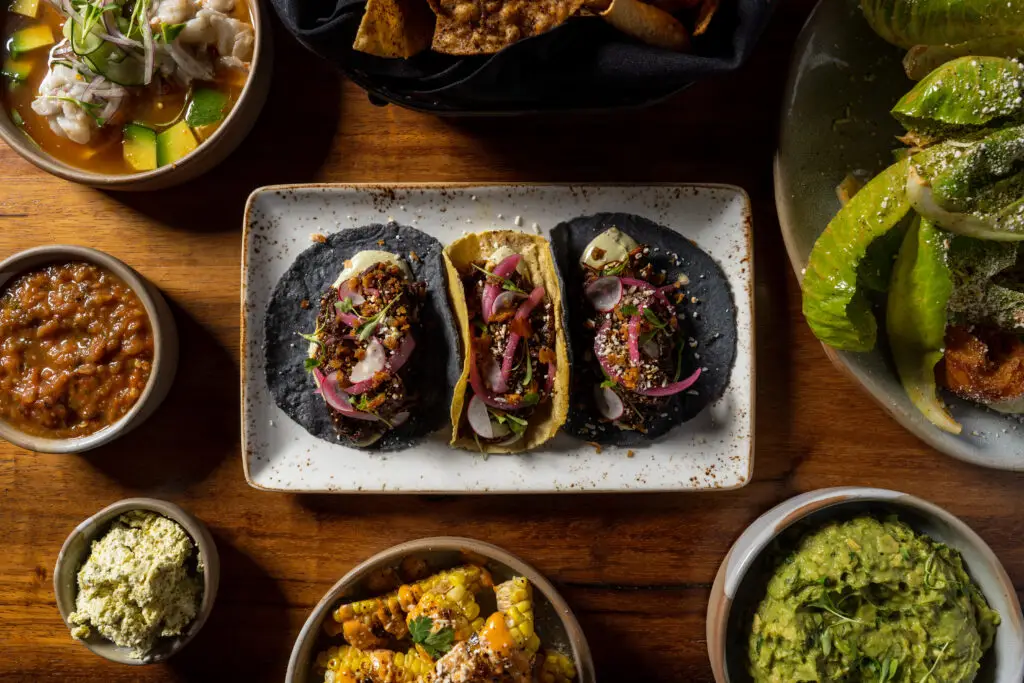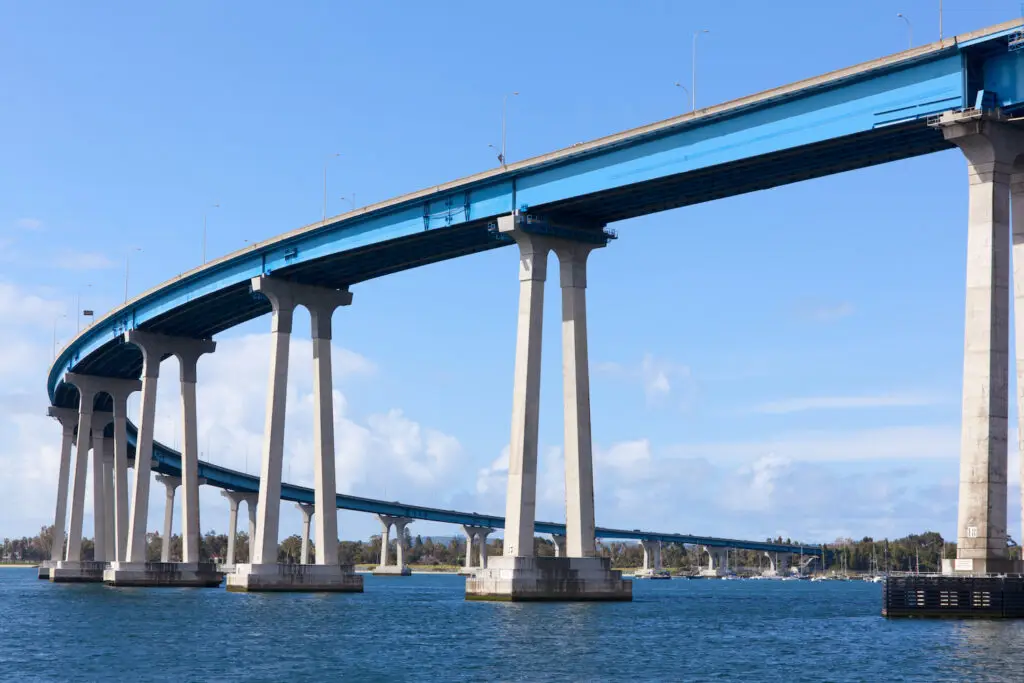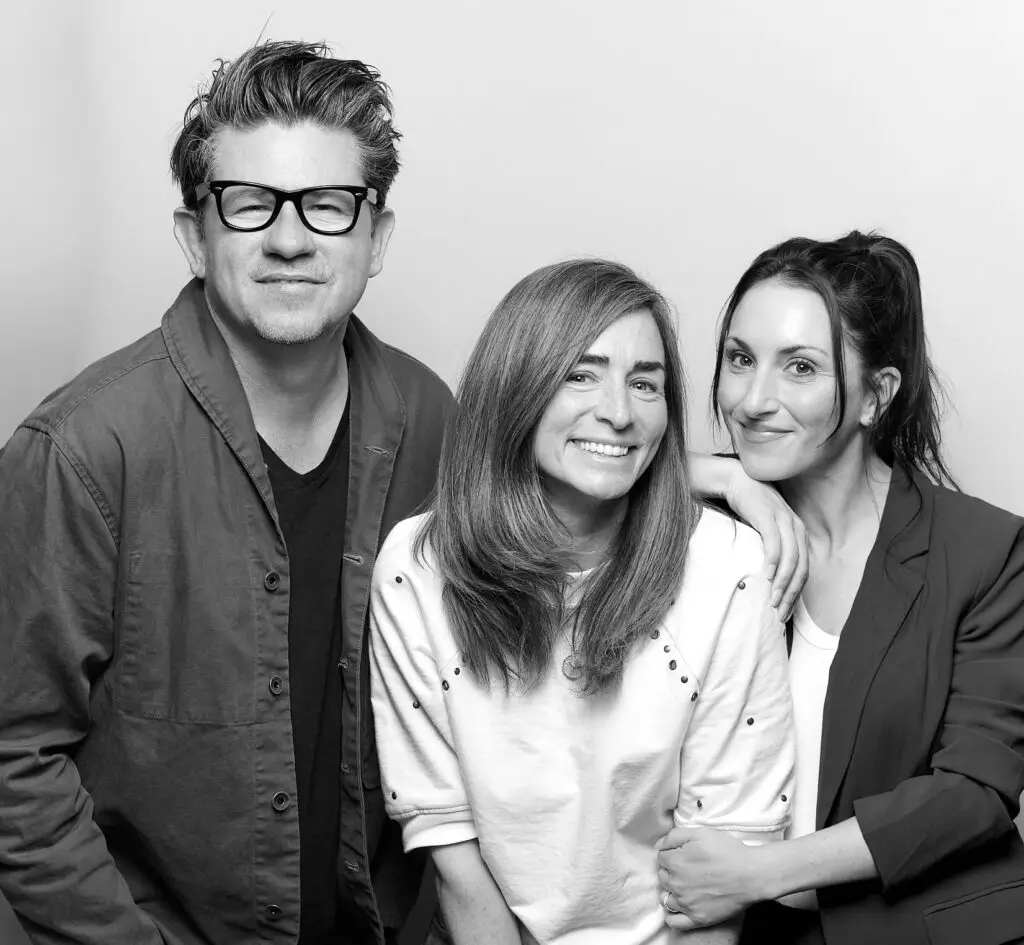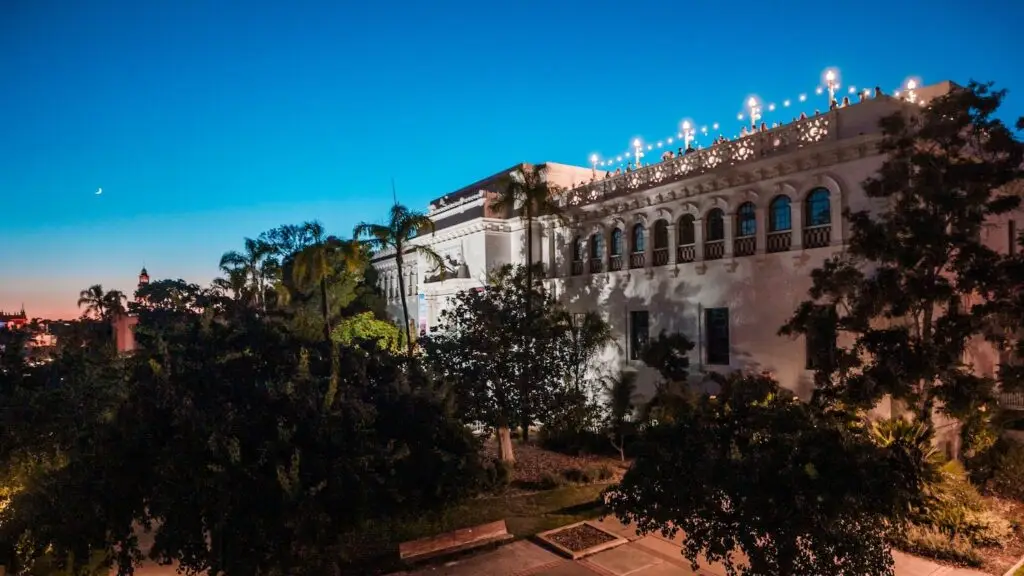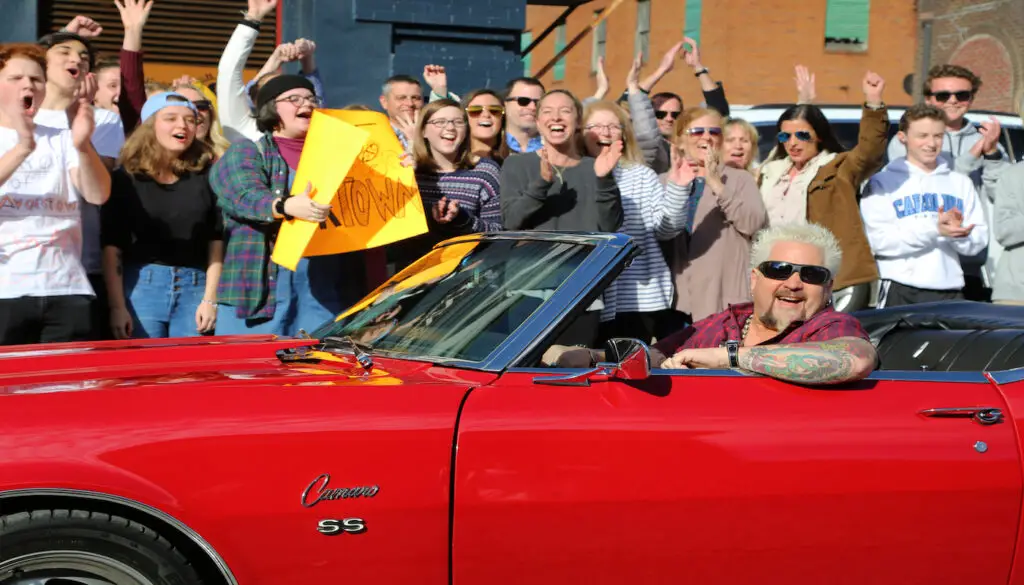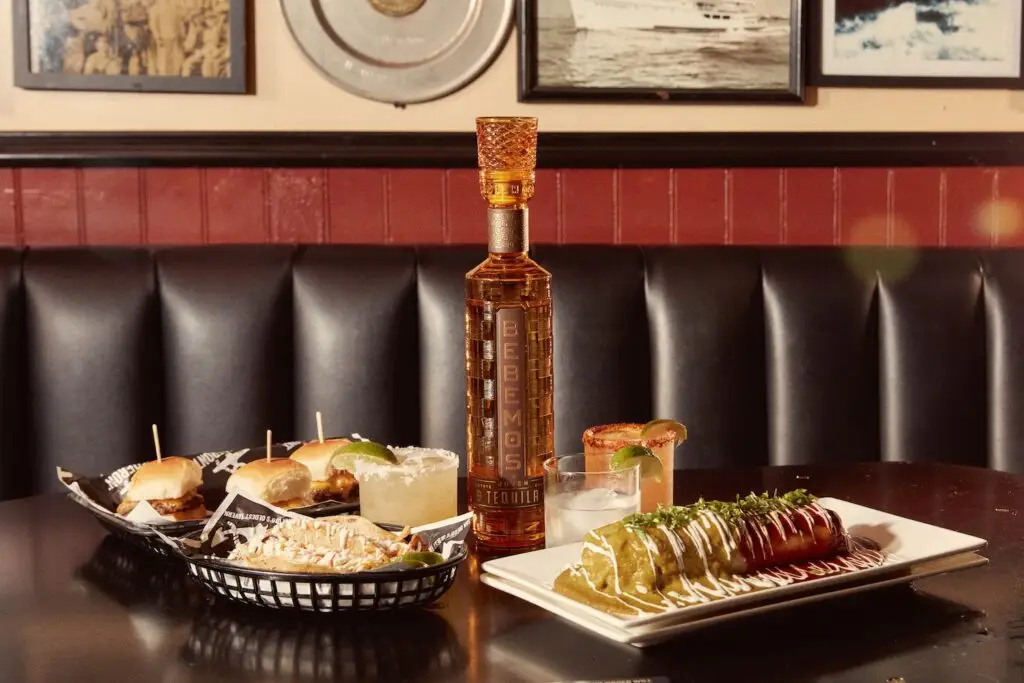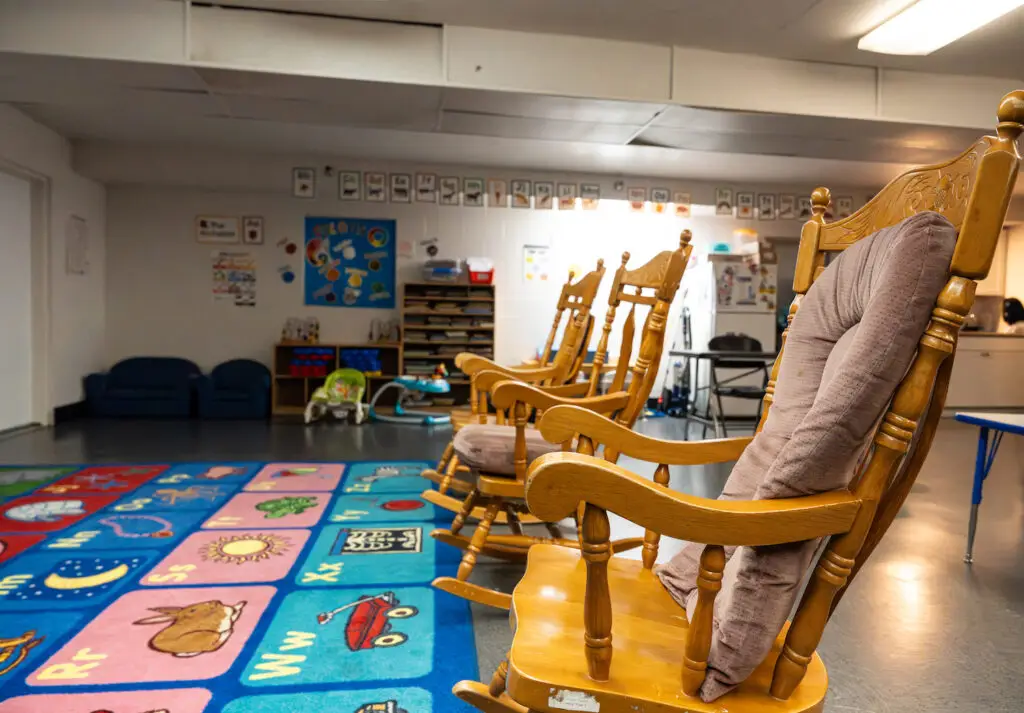Controversy over a plan to replace curbside parking with bike lanes may be hurtling toward its dramatic conclusion in North Park. In June, the city of San Diego plans to remake the busiest 2.4-mile stretch of the neighborhood—30th Street from Juniper Street to Adams Avenue—by adding protected bikeways. It will forever change the look and feel of North Park’s popular restaurant row, give or take a few pandemic dining parklets.
The new, seven-foot-wide bikeways will run along both sides of the street, replacing more than 450 curbside spaces. Thanks to a yearslong fight to preserve them, nearly 100 parking spaces will remain, but inside the bike lanes as so-called “floating spaces,” like those installed downtown over the past two years. There will be new street signs, unfamiliar green and white stripes on the pavement to show where bikeways intersect with crosswalks or driveways, and other visual vocabulary we’ll all have to learn.
North Park is far from the only stretch of road being outfitted with bike lanes. San Diego’s Bicycle Master Plan of 2013 called for more than a thousand miles of cycling infrastructure to be implemented by 2030, and the city says it has completed over 400 miles so far. Protected bikeways, which add concrete or visual barriers between cyclists and cars, have been added to J Street in East Village and to Harbor Drive near the airport. They’re almost completed along Fourth and Fifth Avenues through Bankers Hill. The list goes on, and is quickly getting longer. Adding bikeways to urban neighborhoods takes years of committee meetings, community outreach, and redesign, and many years of behind-the-scenes effort are just now starting to pay off.
30th Street presents a bigger challenge than most, leading to tough decisions about what stays and what goes. As a bikeway planner from SANDAG puts it, “Some of these city streets are really old, and there’s only so much room curb to curb.”
For example, the eight tenths of a mile between Juniper and Upas Streets has no center lane, so adding bikeways leaves behind zero parking spaces. The lack of back alleys between Upas and University Avenue means some segments of the center lane must be retained as commercial loading zones. Yet other sections must be cut to make room for ADA parking, passenger loading, parcel deliveries, and more.
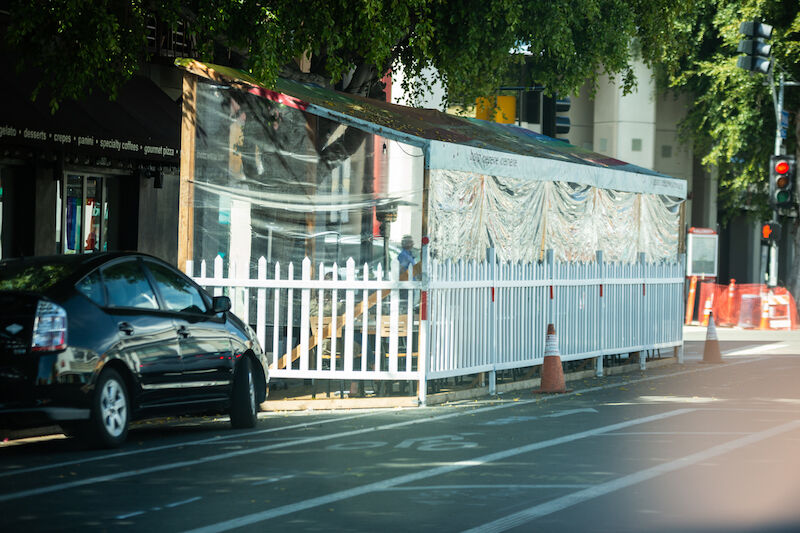
Bike lanes 2
Logistical Hurdles
The plan has no shortage of detractors, the most visible being the Save 30th Street Parking organization. Speaking for the group is longtime resident Pat Sexton, who has worked with fellow North Parkers to oppose the bikeway plan since learning of the proposal in 2016.
Sexton stresses that she and most of the organization are pro bikeway, they just don’t believe it should carve up the neighborhood’s busy commercial center—they prefer the lanes be installed two blocks west, on Utah Street, for starters. They’re sure most in the community don’t want what the city is selling.
“I think there’s a lot of things that the city hasn’t thought about,” Sexton says. “Where are trash cans going to go, for pickup? In the bike lane or in the traffic lane? What would happen if the center lane is gone, and there’s a traffic jam, and a fire truck is on its way?”
Along with a litany of logistical hurdles, Sexton and Save 30th allege the loss in parking will create undue inconvenience for 30th Street residents with cars, and hurt business for restaurants and retailers that have already been struggling. The group’s attorney, Craig A. Sherman, says they’ve tried twice to stop the project in court and have been denied, and are trying to get a new hearing to block the project’s estimated June start date.
“The bike lobby is so powerful in San Diego right now,” Sherman says. “They put together a proposal, and it gets built.”
But the city will have to start some sort of resurfacing in June. Its road crews have already been busy tearing up 30th Street to replace degraded water pipelines. Once they finish, there won’t be a better time to add bikeways.
But this timeline also puts the project at odds with the state of outdoor dining—30th Street is currently loaded with curbside parklets that have sprung up in response to public health restrictions. City permits for those parklets don’t expire until August.
If there’s one issue where bikeway advocates and local business groups agree, it’s that the pandemic parklets should be considered before the final bikeway plan is built. North Park Main Street and biking advocacy group Bike SD has even made an eleventh-hour plea to the mayor to modify or pause the project while outdoor dining is sorted out.
As it currently stands, restaurants would have to disassemble their parklets, then rebuild them once the road is resurfaced and bikeways installed. Bike lanes would be temporarily routed around each parklet, detouring cyclists into a vehicular traffic lane, creating a dangerous tangle of liability and risk.
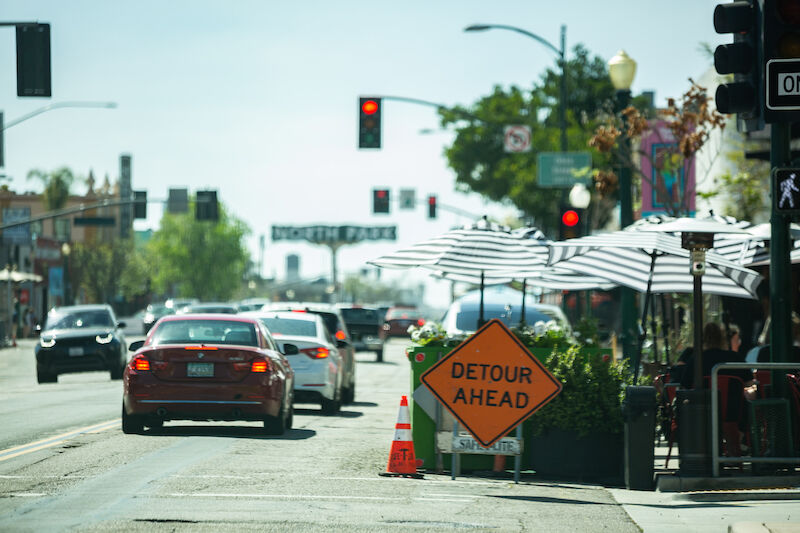
bike lanes 3
A False Sense of Security?
Some avid cyclists question the safety of protected bike lanes altogether, such as Serge Issakov. An avid rider going back decades, Issakov sits on the boards of several biking organizations, including the California Association of Bicycling Organizations, and he serves on the city’s Mobility Board.
He’s also involved with the Facebook group Encinitas: PLEASE Restore Safety In Cardiff. The 980-member group, many of them recreational cyclists, has been lobbying the city of Encinitas to redesign a protected bikeway installed last year along South Coast Highway 101 in Cardiff.
The highway was a popular route among recreational riders long before a physical barrier was installed to make them feel safer, and Issakov blames that feeling for a steep rise in bike accidents since—24 and counting. “It’s unsafe to think and feel that way,” he says, alleging that protected bikeways can create a false sense of security. Instead, he advocates bike safety education and awareness to reduce accidents, insisting, “When you don’t have that ‘protection’ making bikers feel safe, they’re more likely to pay attention.”
He suspects that’s what happened to a local research scientist who died last year after being struck by a car turning at a Leucadia intersection, where his bike emerged from a protected bikeway. Issakov worries the same potential exists in the 30th Street plan, where parked cars and buffers will reduce awareness between drivers and riders heading into busy cross traffic. “We’re sending them to a potentially dangerous conflict point,” he says.
Opposition to the project has been well publicized, and while the possibility of a judicial injunction or executive action may yet delay North Park’s controversial bikeways, there appears to be too much momentum to outright stop them from happening.
That’s because, beyond the Bicycle Master Plan, protected bikeways satisfy an overlapping set of policy benchmarks—such as the city planning department’s Complete Communities initiative, which recommends bikeways to link all communities to public transit, regardless of economic status. Or San Diego’s Vision Zero goal of “zero traffic related fatalities and severe injuries by 2025.” The city’s Climate Action Plan states that, for its goals to be met, 18 percent of central San Diego’s commuters should be on bikes by 2035.
The Road Ahead
City officials are bound to these long-term policy commitments, which are meant to guide the city toward a more sustainable, safe, and equitable future. “Equity in the sense of who’s able to use the street?” asks Chris Olsen, a former policy analyst for the city who serves as a board member of Bike SD. “Is it just affluent able-bodied people who wear spandex and can afford an expensive bike?”
Almost specifically, he argues, it’s not. The planners and cycling activists pushing for protected bikeways try to dispel the perception that they’re being built solely for the subculture of enthusiasts already bold enough to ride their bikes across the city. They’re focused more on attracting those of us who might ride more if we didn’t think we had to compete with cars for road space. Whether trading parking spaces for bike lanes kills North Park or saves it will depend on how many casual riders, families, and even seniors take the city up on its offer to bike more through town on a regular basis.
“Building biking infrastructure for people who already bike is important,” Olsen says, “but building bike infrastructure for those people who will take it up—that’s where you move the needle.”
SANDAG numbers suggest that needle has started to move, particularly during the pandemic. Its data shows bicycle traffic through spring and summer 2020 was up by 42 percent compared to 2019.
Which is exactly the trend Andy Hanshaw expects to see looking forward. The Mobility Board member and executive director of the San Diego County Bicycle Coalition has been working tirelessly in support of this kind of bike policy for ten years. With patience, he vows, the people of North Park will eventually see how beneficial a strong bikeway network will be: to businesses, to residents, to everyone. “These bikeways that take a long time, they’re being built for future generations,” he says. “For future generations that will choose to live car-free.”
Ian Anderson is a freelance writer based in San Diego. Find his work at anderson-stories.com
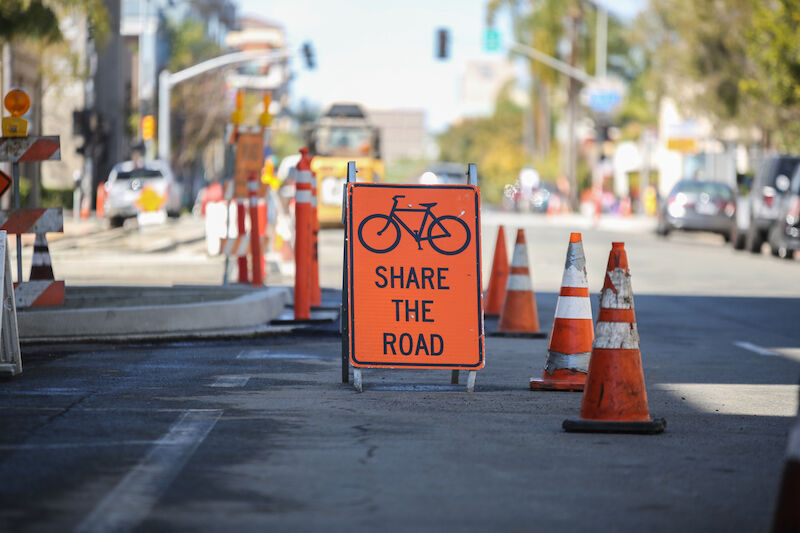
PARTNER CONTENT
Bike lanes 1
